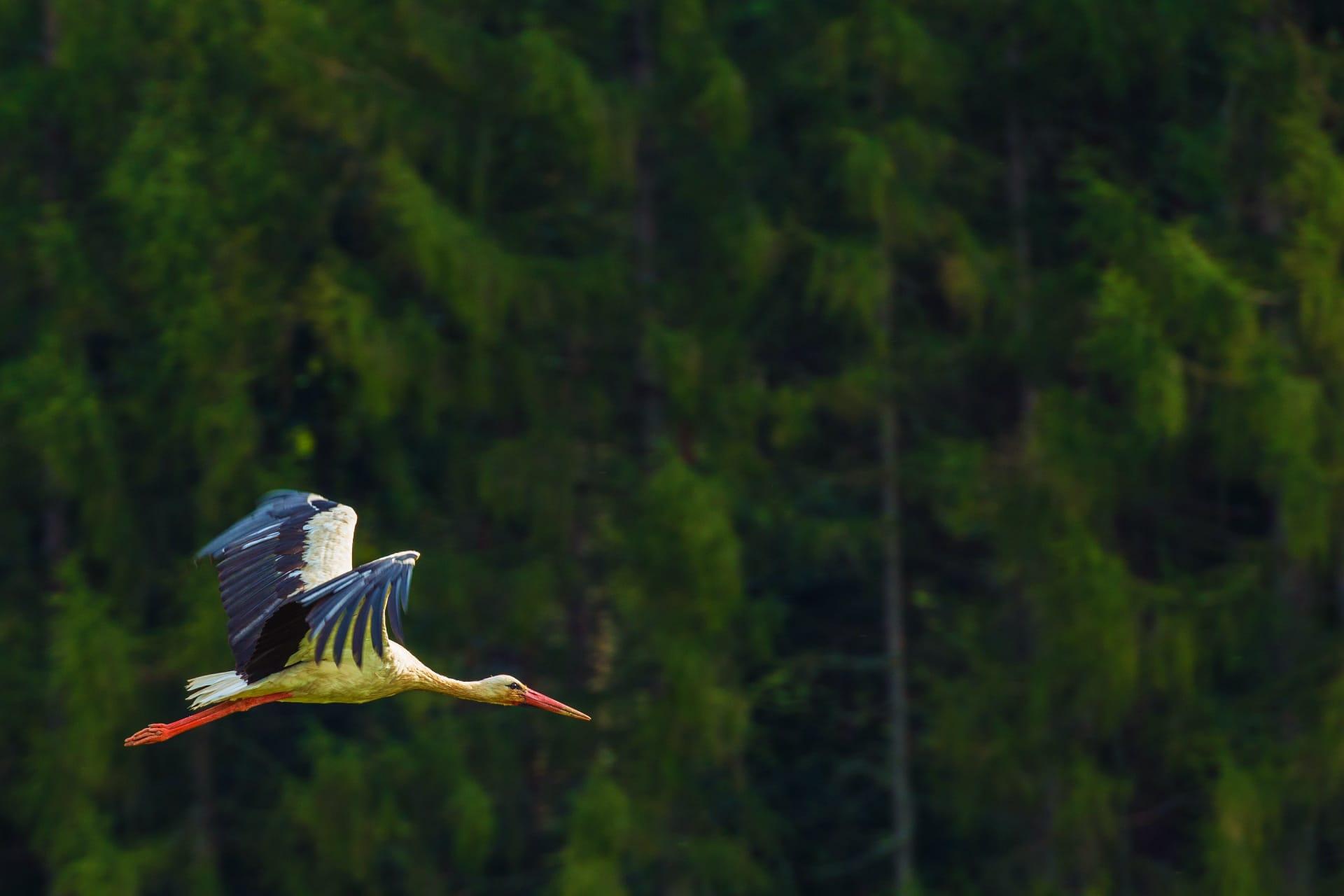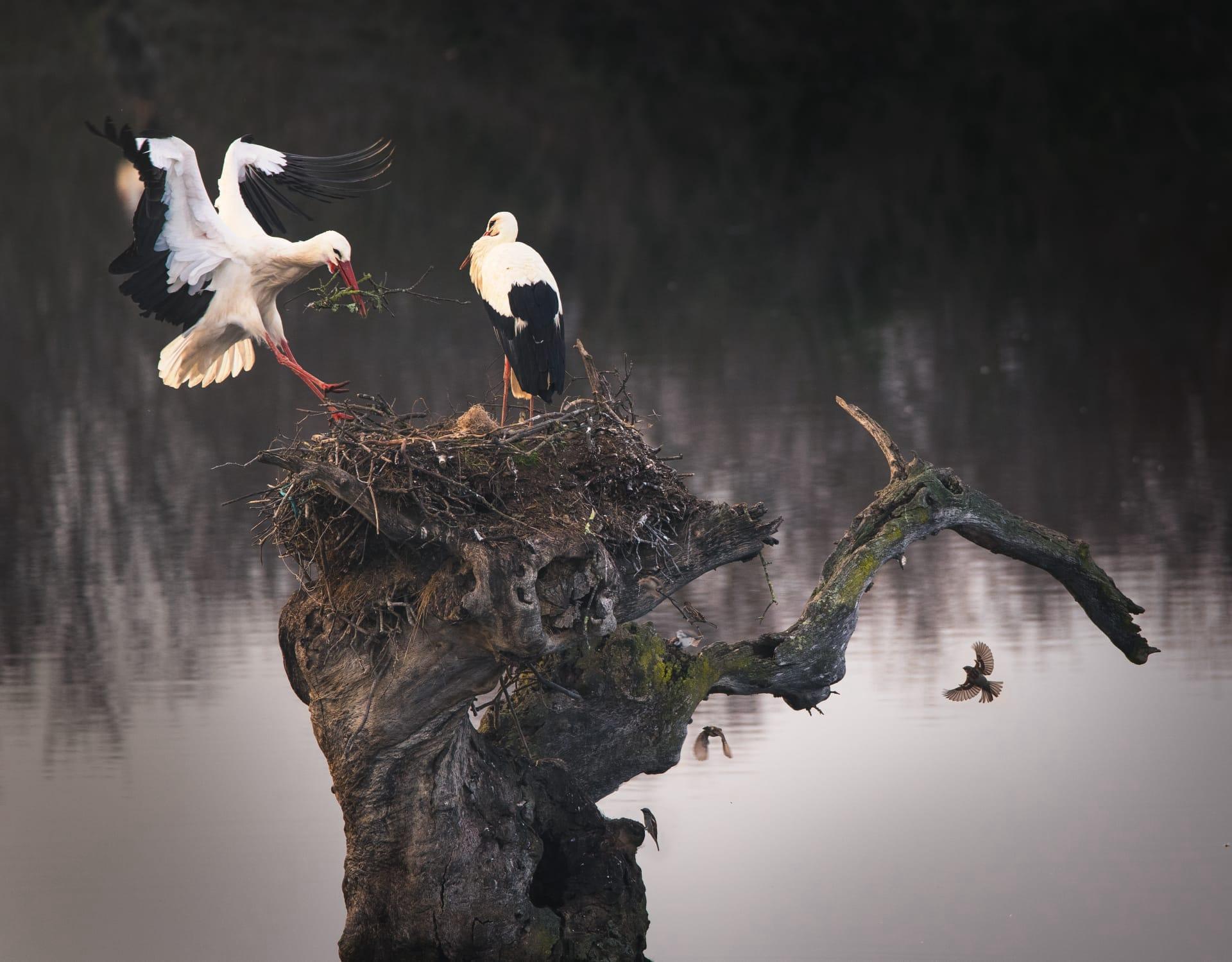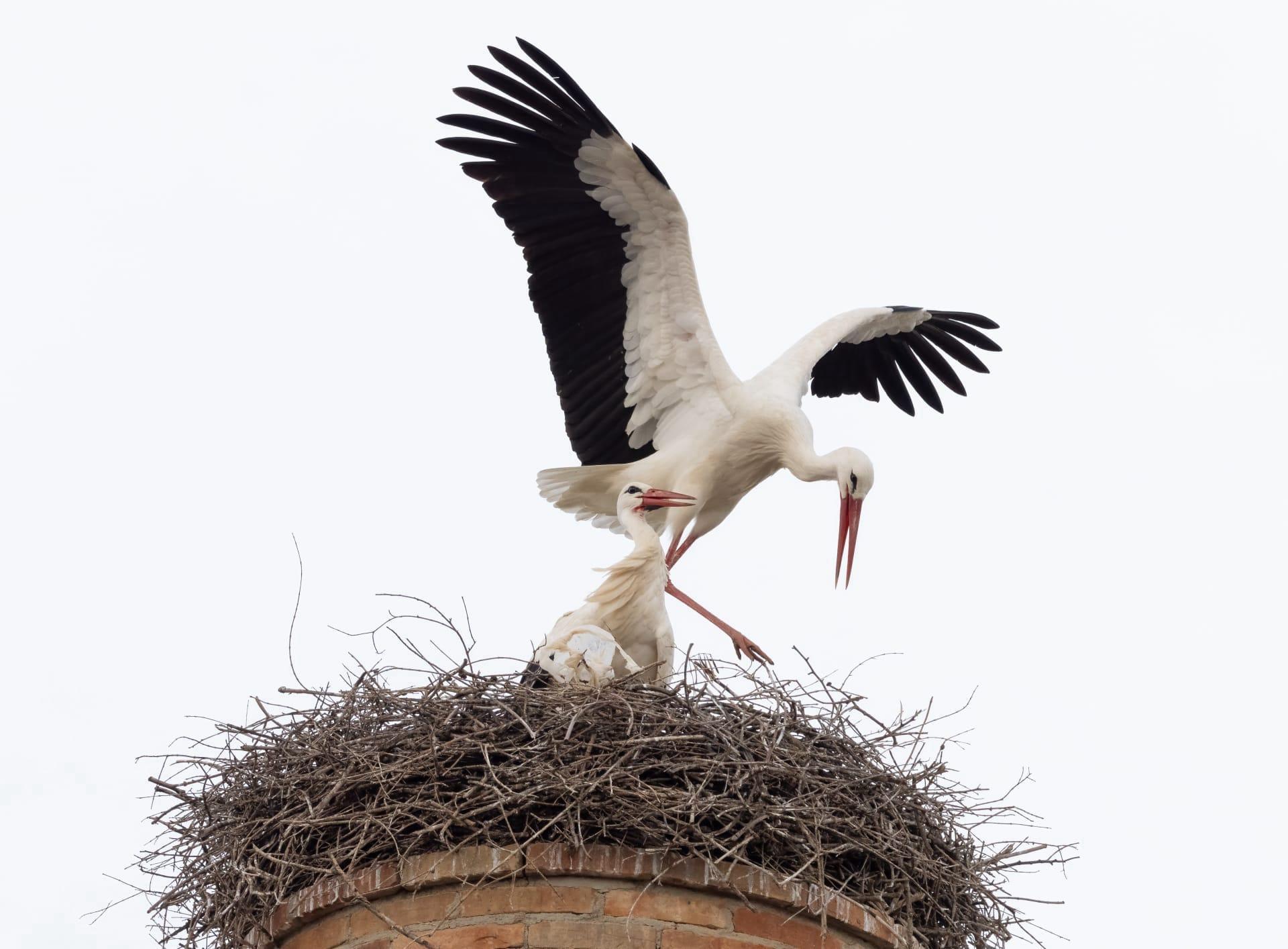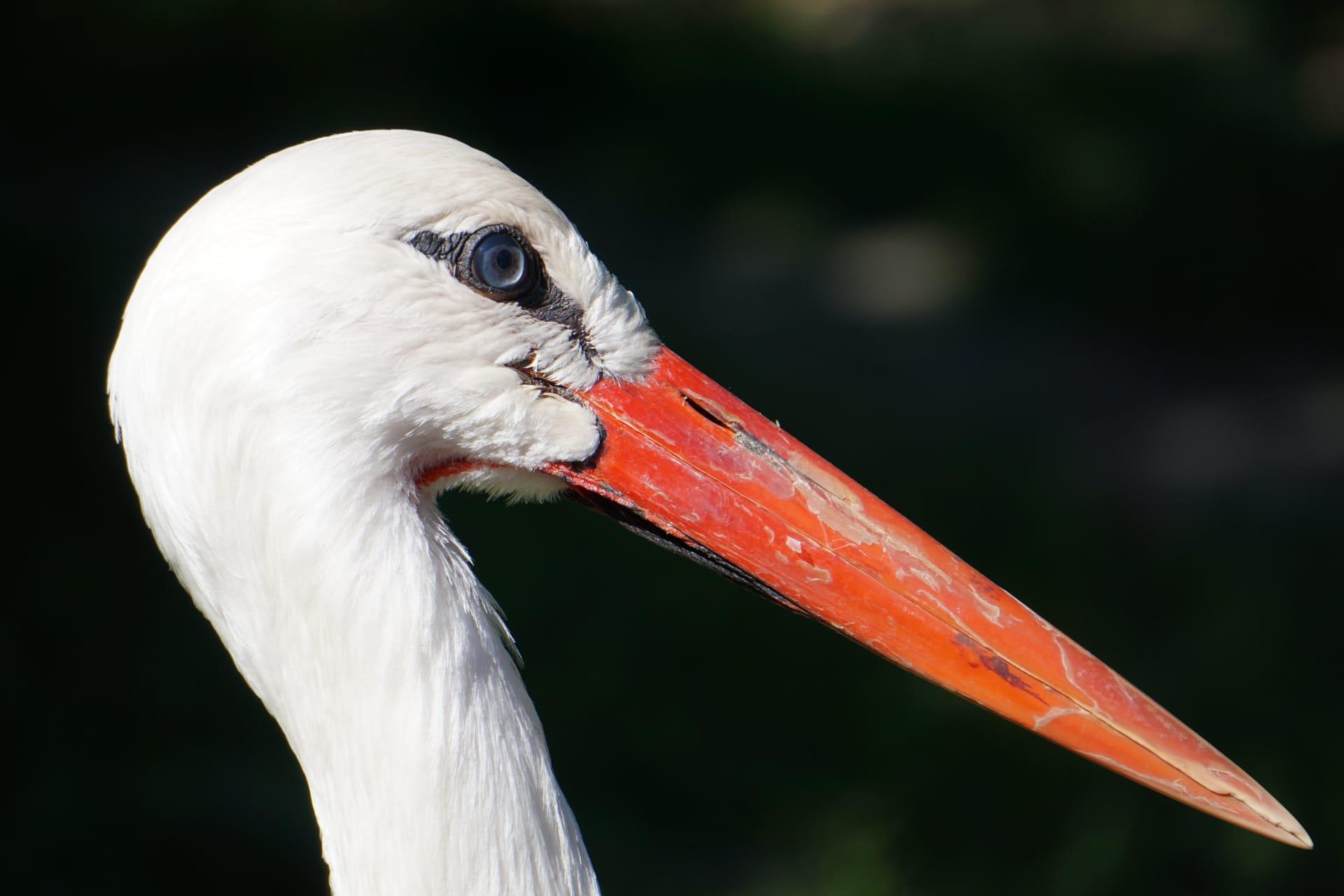1
Storks are known for their impressive migration journeys. Some species, like the White Stork, travel from Europe to Sub-Saharan Africa every year, covering a distance of up to 12,000 kilometers (around 7,500 miles). What's fascinating is how they navigate. Storks use thermal currents to soar and glide through the sky, conserving energy. This method allows them to travel up to 320 kilometers (about 200 miles) a day. By using these air currents, they manage to complete this lengthy migration efficiently.
Another intriguing aspect of storks is their beak clattering. Storks lack a syrinx, the vocal organ of birds, so they can't sing like other birds. Instead, they communicate by rapidly clattering their beak, creating a distinctive sound. This behavior is often seen in courtship rituals and when storks are defending their nests. The sound of the beak clattering can be heard from a considerable distance, making it an effective means of communication for these large birds.

2
The diet of storks is quite varied, reflecting their adaptability. They primarily feed on insects, fish, amphibians, reptiles, small mammals, and even small birds. Storks are opportunistic feeders, which means they can quickly take advantage of different food sources. For instance, the Marabou Stork in Africa is known to feed on carrion and can often be found near human habitats scavenging for scraps. This adaptability in diet helps storks to thrive in a variety of environments.
Storks play a significant role in folklore and mythology. In many cultures, they are seen as symbols of good luck and fidelity. The most famous tale is perhaps their association with delivering babies. This belief has roots in German folklore and has been popularized through various stories and cartoons. The image of a stork carrying a newborn in a cloth bundle has become a widespread symbol for childbirth and parenthood, showcasing the cultural impact these birds have had on human society.

3
Storks have an unusual way of drinking water. Unlike many birds that scoop up water in their beaks and throw their heads back to swallow, storks suck up water. They press their beaks into the water and use a rapid, pumping action with their throats to draw the water up. This unique drinking method is rarely seen in other bird species and highlights the diversity of adaptations in the bird kingdom.
Storks are known for their monogamous behavior, often forming long-term pair bonds. Some species, like the White Stork, are known to return to the same nest year after year with the same partner. These nests can become quite large over time, as storks continue to add materials each year. It's not uncommon for a stork nest to be used for decades, becoming a prominent feature in their habitat. This long-term bonding and nest-building behavior underscore the storks' commitment to their offspring and the importance of stable habitats in their life cycle.

4
The wingspan of storks is another remarkable feature. Some species, like the White Stork, have wingspans that can reach up to 2.3 meters (about 7.5 feet), making them one of the larger birds in the sky. This large wingspan aids in their soaring and gliding flight style, especially useful during long migrations. Their broad, long wings are perfectly designed for catching and riding thermal currents, allowing them to cover great distances with minimal energy expenditure.
Stork species vary widely in their appearance and size. The smallest stork, the Dwarf Stork, stands about 55 centimeters (22 inches) tall, while the largest, the Marabou Stork, can stand up to 152 centimeters (about 5 feet) tall with a wingspan of 3.7 meters (over 12 feet). This diversity in size and appearance reflects the different ecological niches storks have adapted to. Each species has unique characteristics suited to its environment, from the marshlands inhabited by smaller species to the open savannas favored by larger storks.

5
Storks have an impressive lifespan, with many species living for 30 years or more in the wild. This longevity is quite remarkable for birds of their size. Factors contributing to their long life include their strong immune systems, slow rate of aging, and lack of natural predators once they reach adulthood. In captivity, storks can live even longer due to the absence of environmental threats and regular access to food and medical care.
Lastly, storks play an important ecological role as pest controllers. Their diet of insects and small animals helps to keep the populations of these potential pests in check. In agricultural areas, storks can be particularly beneficial, as they consume large quantities of crop-damaging pests. This natural pest control service provided by storks underscores their value in maintaining ecological balance and aiding in sustainable agriculture practices.